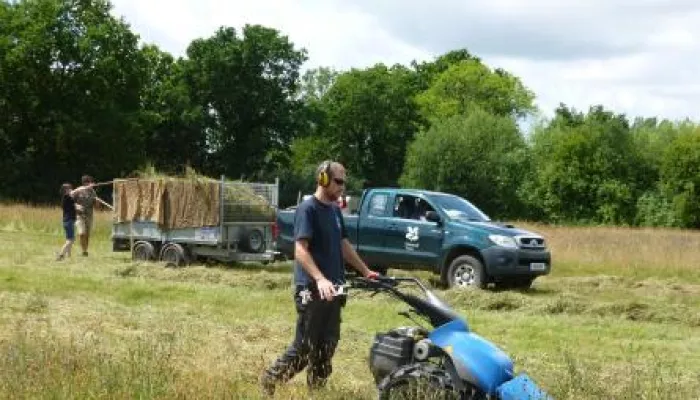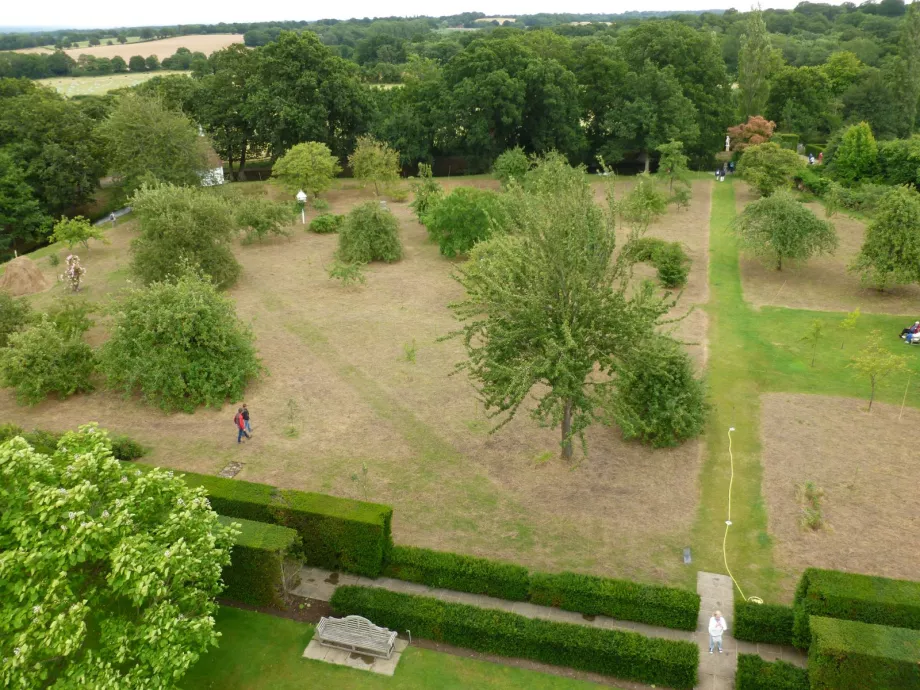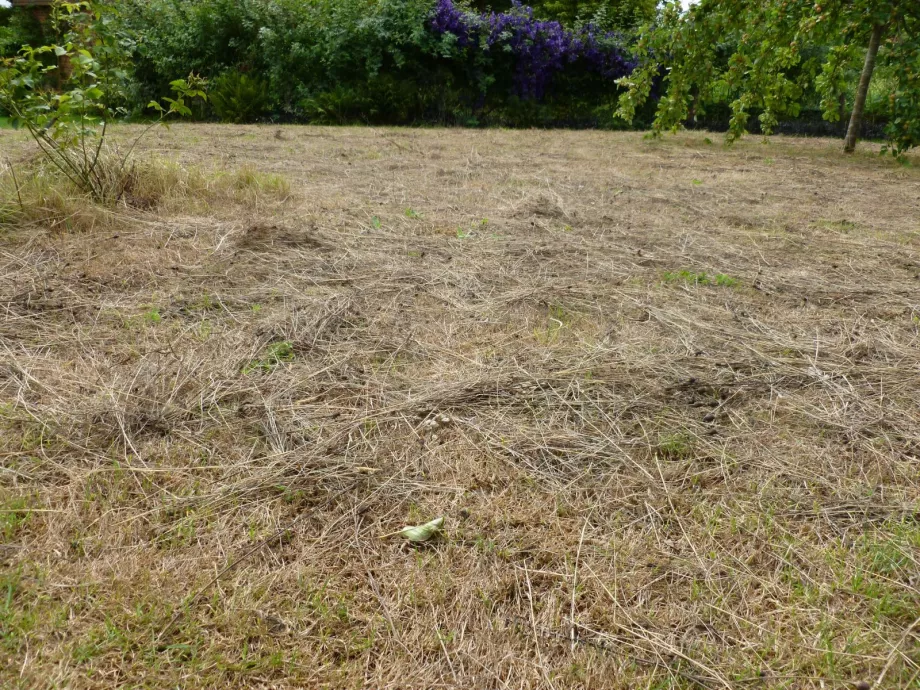One of the best, and easiest methods to transfer meadow seeds is to cut and spread green hay. Harvesting seeds other ways requires a lot of time or expensive seed harvesting equipment. Green hay is literally cutting an area of meadow or donor site (a site with high diversity with species you want to collect) and collecting it up carefully straight away and taking it to another site (receptor site) spreading it out and allowing the seeds to drop out of the hay into the prepared ground.
With appropriate long term management, hay meadows or species rich grassland can be restored over time. I hope to continue working with the team at Sissinghurst and other local landowners to restore and create meadows, along with spreading the message! Over time hopefully, we will be able to reverse some of the 97% decline. In the mean time I look forward to seeing what comes up in the orchard area next year.






